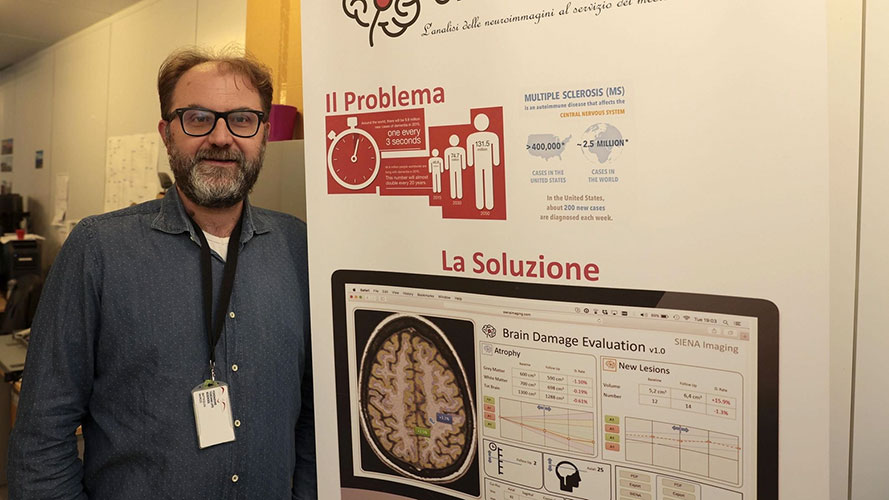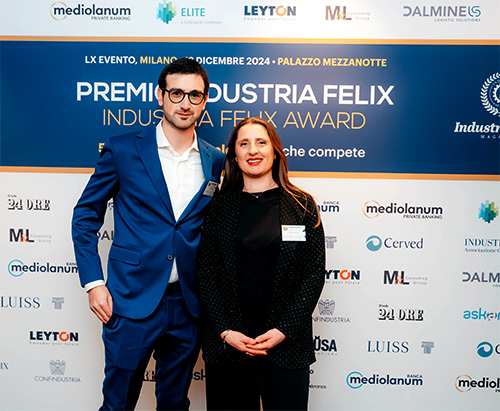Siena Imaging, a university startup specializing in MRI image analysis software, has achieved success through a collaboration with the University of Siena and the Toscana Life Sciences incubator. With 230 percent growth in five years, the company is focusing on research and service delivery to pharmaceutical companies to continue to grow. Siena Imaging double profits
IT IS AN EXAMPLE of the virtuous triangulation that can be triggered between entrepreneurial spirit, university knowledge, and the support of a business incubator, plus the fertile base of an area that has been at the forefront of life sciences for decades. Siena Imaging, founded in 2017 as a startup of the University of Siena, deals with the development of software for large-scale analysis of MRI images to assess brain damage and try to characterize disease diagnosis, for example in cases of Alzheimer’s or Multiple Sclerosis. “We had been developing this path for 15 years in academic activity, collaborating with the University of Oxford among others, then the decision was made to broaden the scope with our own startup,” explains Marco Battaglini (pictured above), a researcher from the University of Siena and managing director of Siena Imaging, which he founded together with Nicola De Stefano, professor of Neurology at the Department of Medical, Surgical and Neuroscience Sciences, and Giacomo Demurtas, a computer scientist.
At the beginning, seven years ago, there were three of them and two doctoral students, today they have eighteen employees, the turnover is around one and a half million euros with a growth of 230 percent in five years, the resonances analyzed have exceeded two hundred thousand, and the financial statements have received the Industria Felix award, an award that goes every year to the best companies for management performance. “This result surprised and made us proud,” says Battaglini, “when we started in 2015 we knew nothing about billing and businesses, we took two years to study, taking weekend courses and trying to structure the startup as best we could. And here we are, rewarded by a system that automatically analyzes the financial statements of sixty thousand companies and rewards the hundred most virtuous, this is also an achievement that comforts us.”
Fundamental has remained the relationship with the university, on the one hand firm, on the other necessarily on parallel paths: “Once the startup period was over,” Battaglini notes, “Siena Imaging and the Department of Medical, Neurological and Neuroscience Sciences continued the collaboration by creating a joint laboratory. In between is the attention stimulated in the world of the pharmaceutical industry, “not so much for the speed, but for the ability to analyze and the accuracy of our work,” says Marco Battaglini again. “Thus we have become a reliable partner for clinical trials. First place in a contest sponsored by Roche Italy and in which more than two hundred companies participated was a relevant step in our growth path.” So is the relationship with Toscana Life Sciences, the incubator of life sciences companies. “We could not have started in just any location by renting an apartment,” Battaglini notes, “we would never have been able to structure ourselves. Here we speak the same language, there are the proper certifications, the necessary controls for our business. There is an environment that, even with the differences in individual activities, is always within the health field. And there is the great tradition of this city that, together with the University, forms a decisive humus.”
How will Siena Imaging develop in the future? Impossible to look into the crystal ball of an ever-changing world. However, the basic idea runs along two paths: “A fundamental part is and will remain that of research,” says Battaglini; already four out of eighteen employees are researchers, a high average. The other is that of service delivery to pharmaceutical companies, thanks precisely to the work of the research group. The goal is to be able to make our biomarkers available to physicians, it would be a fundamental step for the company and also, we are convinced, for the ability to analyze by health care personnel.”
A further step that would close a circle, bringing Siena Imaging’s technology inside hospital facilities as well, thus enabling it to open a new front beyond the pharmaceutical industry. And ensuring further growth to those numbers that underscored the development in its early years: the two early researchers are now structured, the job opportunities attract young people from the University of Siena but also from other parts of Italy or from abroad. “The Covid period,” notes Battaglini, “has been an opportunity for us to grow; we have improved our infrastructure and job opportunities. Our competitors are based in global metropolises, we had to overcome the gap of being in a small town thanks to the tools and technology we use, but also to the network of relationships that allows us to operate at the highest level.” And here we come back to that environment, which has already made the fortune of so many companies in Siena, that blends the well-established tradition in life sciences, a centuries-old University, innovative management tools. And in the background there is also the big game of the Biotecnopolo, which is still in the (prolonged) launching phase but could greatly influence the entire Siena district, which has dozens of companies, from multinationals to startups, in fact. But that is another story.


